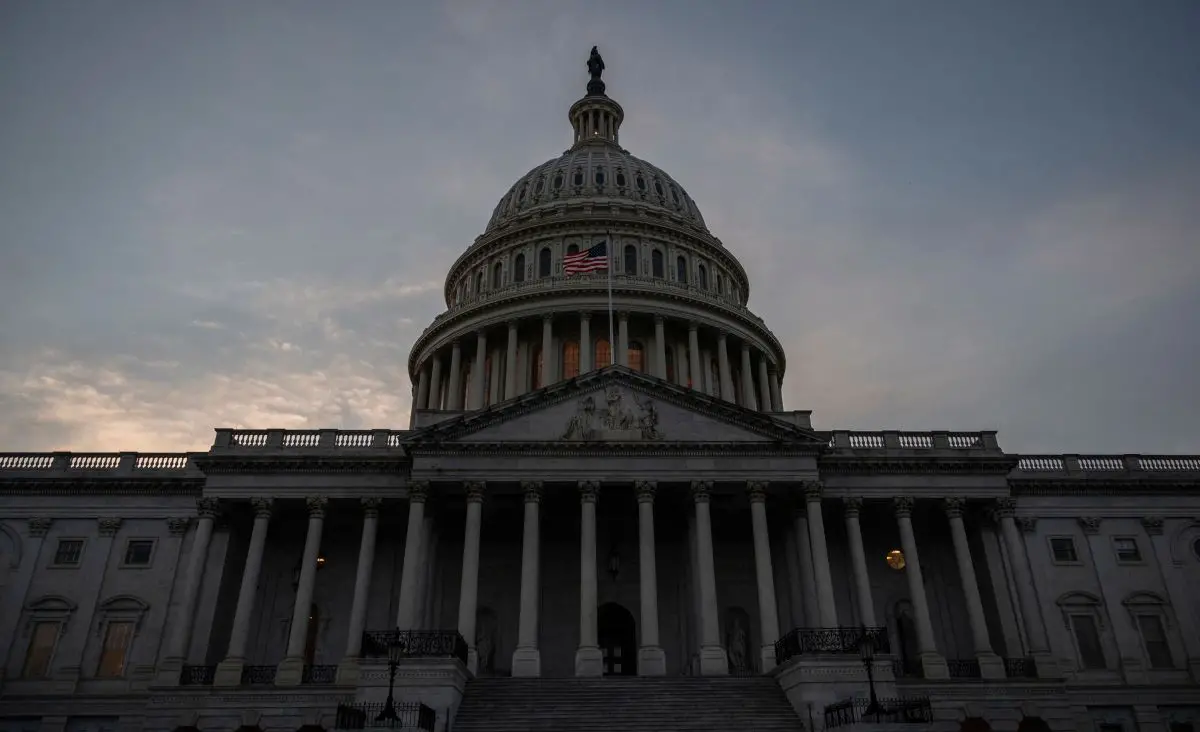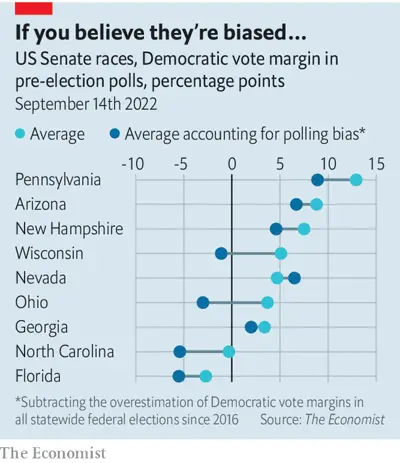It seems like Democrats in the media are on a boat that keeps tossing from one side to the other. Yesterday, they were going to not only keep the Senate but expand their majority. Today, the jitters are setting in as races tighten and the fear of polling bias comes into play.
The truth is always somewhere in the middle but the fundamentals of this election haven’t changed. That’s a term I should trademark since I must have written it a few dozen times now. Inflation is up, the economy is in a recession, and the White House is having parties celebrating electric vehicle tax credits while people consider buying fewer groceries due to rising costs.
I know, it’s abortion. Abortion will save Democrats. Maybe in some races, granted, but not nationwide.
Control of the U.S. Senate hinges mostly on four “toss-up” races that Democrats were feeling great about two weeks ago but not anymore. Senate races in North Carolina, Ohio, Pennsylvania, and Wisconsin will decide control.
According to an analysis from the Economist, if state-level polling bias, which usually favors Democrats, remains as true as it was two and four years ago, Republicans might be celebrating with an easy Senate win this November:
Take our projections in the Senate. The Democrats’ current advantage is largely due to favourable polling in four Republican-held seats: North Carolina, Ohio, Pennsylvania and Wisconsin. But these states have another thing in common. Each had a large polling error in the 2016 and 2020 presidential elections.
If we adjust our averages according to the bias in the polls of those elections, the Democrats’ lead vanishes in three of the four (see chart). In North Carolina, the expected margin for the Democratic candidate falls from a dead-heat to -5; in Wisconsin, from +5 to -1; and in Ohio, from +4 to -3. Only in Pennsylvania, where John Fetterman, the Democratic lieutenant-governor, has a double-digit lead over Mehmet Oz, his Republican opponent, do Democrats keep their advantage.
Here’s the aforementioned chart:
Pennsylvania is the toughest battle for the GOP right now. It’s a naturally blue state when it comes to statewide elections, but Democrat John Fetterman is a far-left zealot who sits outside the mainstream of most rank-and-file moderate Democratic voters.
The problem for Republicans is that Dr. Mehmet Oz is, well, weird. He’s had trouble connecting with voters and seeming authentic, problems that he’s been working on with some improvement, but time is running short.
Early voting starts very soon in some parts of Pennsylvania and Fetterman reluctantly agreed to debate Oz on Oct. 25, a date that may be too far into the process to make a difference.
The conclusion, from the Economist, is that it all comes down to the polling metrics and whether you believe that polls are accurate or not:
If we repeat our simulations nationwide, the Democrats’ expected number of Senate seats, based on the polls alone, would drop from 52 to 50. The party’s probability of holding the majority would plummet from four-in-five to one-in-two. In other words, if you believe the pollsters have fixed their problems from the last election, or that bias is specific to Mr Trump running for office, you should expect a Democratic Senate come 2023. If not, the race is a toss-up.
This is an eerily similar feel to before the 2016 election when forecasters were giving Hillary Clinton a 90% chance of winning the presidency but pollsters were quietly grumbling and warning of pitfalls when it comes to identifying the voter base that will actually show up and vote.
If history is the guide, then these “toss-up” races in a wave year currently benefitting Republicans will likely break slightly toward the GOP. On the other hand, it’s possible some Democratic enthusiasm on the abortion issue is also underrepresented.
The real bottom line is that stories claiming all hopes of Republicans re-claiming the U.S. Senate have been dashed are total nonsense. The upper chamber still remains a toss-up but if races like Georgia flip to red, Ohio stays red, and somewhere else like Nevada, Arizona, or Pennsylvania provides a surprise, then Dems will be out of power.

